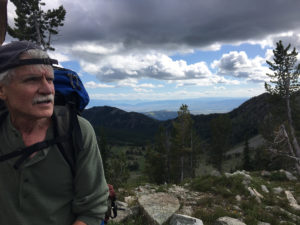
Inhale deeply. That heavenly fresh-cut grass smell you savor while mowing your back 40 is actually your lawn screaming in pain from the hell of a hurtful haircut.
Plants and humans respond alike to physical injury by mobilizing our internal pain killers and healing molecules to recover from the trauma, defend our physical system and heal the damage through new growth. Unlike humans, plants can’t scream, grab their wound and flee, but how they respond is often equally effective – and in the case of grass lawns, fragrant as well.
Over the last century, scientists have discovered that grass and other leafy plants routinely emit a variety of vaporous self-defense chemicals called green leaf volatiles (GLVs). They’re a type of volatile organic compound, which by definition easily evaporate at room temperature.
Specific GLVs act to help leafy plants recover and regrow after being stomped by cattle, stressed by drought, bacteria and pests, chomped by herbivores or clipped by humans with lawn mowers.
That Lovely Aroma Is Your Lawn’s Distress Signal
Some GLVs even prove to be remarkably proactive. In one study, scientists found that a specific GLV emitted by the coyote tobacco plant interacted with the saliva in certain caterpillars to make the squiggly plant-eaters more appealing to their predators.
So what happens when you mow your lawn? You guessed it – the near-holocaustic trimming of its blades prompts your grass to explode with a hundred-fold emission of GLVs. That smell of fresh-cut grass is really a shriek of despair as your lawn sends out distress signals. According to a 1988 Australian study, while the blast of those chemical compounds includes some natural antibiotics to help disinfect the wounded blades, it also releases such potentially smog-causing greenhouse gases as methanol and ethanol. In fact, scientists consider the world’s grasslands to be one of the major sources of those two gases.
Wedged into that volatile post-mow response in grass are eight related oxygenated hydrocarbons. They include alcohols and leaf aldehydes, that ironically reward us, the mowers, with that delightful cut-grass smell.
Association of Smell With Eating, Drinking
Or so it seems. You see, both our love of the fresh-cut lawn smell and the possibly existential motives of our sweet lawn for emitting it continue to baffle scientists.
As humans, scientists suspect we are subconsciously drawn to the pungent, slightly acetous scent of new-mowed lawns because, while we don’t consume grass like other species, the sweet smell from the GLV mix that our lawns release when mowed may remind us of plants we do enjoy eating or drinking. In a 2010 study, plant ecologist Ian Baldwin, a founding director of the Max Planck Institute for Chemical Ecology in Jena, Germany, found that we respond to the frequent availability of the fresh-cut grass smell in much the same way that Chinese folks who reside near tea plantations might savor the scent of an approaching tea harvest.
“Just about all fresh vegetables have some GLV bouquet to them,” Baldwin told Live Science, including fruits that may emit volatiles when their molecules break down during ripening. “Throughout evolutionary history, we’ve used that information to know when something is ripe.”
Smell of Cut Grass in Song
As humans, our complex cultures may have further tweaked our noses for mows in recent centuries when the well-tended patch of lawn subtly grew into a status symbol of wealth and success. Western culture embraced the change musically in 1917 when master Louis Armstrong recorded “Indiana,” making it a staple of the Roaring Twenties. Here’s a sniff of that famous lyric:
The new-mown hay sends all its fragrance
Through the fields I used to roam
When I dream about the moonlight on the Wabash
How I long for my Indiana home
Pop singer Jim Nabors and country giant Chet Atkins helped further weave that new-mown hay into Western musical culture. Even British rockers Pink Floyd praised the mow on “Fat Old Son” from their 1970 breakout album, “Atom Heart Mother:”
Distant bells, new mown grass
Smells so sweet
By the river holding hands
Roll me up and lay me down
A Cottage Industry of Aroma
Our collective spell over the smell eventually spawned its own scented industry, with fresh-cut grass candles, colognes, air fresheners and fragrance oils, all still readily available on Amazon.
But lest you think your new-mown lawn has been flirting with you, consider this: the gasses it emits may be subtly nudging our mow-crazed species out the door via climate change.

Naturalist writer Gary Ferguson has written 27 books on nature and science. In his latest, “The Eight Master Lessons of Nature,” he suggests that mankind faces enormous risks by not heeding its natural conversation with all other living things.
“When it comes to the nature of nature, we’ve accepted an awful lot as being ‘just the way things are.’ And in fact, they’re nothing of the sort,” he writes. “We shape – and are thoroughly shaped by – the vast array of life-forms and processes with which we share this planet.”
Photo Credit: Clayton800 / Pixabay / License